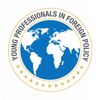
By Cody Knipfer
Control over global aircraft markets has been a cornerstone of the United States’ economic and military power for decades. American aviation giants such as Boeing, along with their supply chains, generate significant economic activity for the country, bringing in the largest foreign trade surplus of all domestic industries. A strong civil aerospace industry bolsters the defense sector, developing a trained workforce and manufacturing capabilities that make it easier for the United States to produce the most sophisticated military aircraft in the world. As significant international competition for aerospace sales emerges, however, the United States will need to look for solutions to maintain its competitive aerospace edge. One such solution is to embrace the development of supersonic flight.
In May, Russia and China carried out maiden flights of their first domestically-produced commercial passenger jets. A joint Russian-Chinese venture is looking to develop a new advanced airliner. India and Japan, too, are forging ahead with their own passenger aircraft programs. If these programs are successful, they could threaten the United States’ current aerospace preeminence in the mid- to long-term.
Foreign competition, a reflection of both developing industrial centers-of-gravity abroad and growing foreign confidence in homegrown technologies, should serve as a warning for the United States. Preserving a dominant position in international aircraft sales and aerospace technology is in both the “hard” and “soft” power foreign policy interests of the United States. American aerospace manufacturers should embrace the development of innovative high technologies that differentiate their products from the offerings of foreign competitors. Leveraging advanced capabilities that nascent foreign competitors are, despite their recent progress, still far from developing may open new markets in which American companies can secure controlling shares.
There is a general consensus in the West that foreign aircraft programs do not represent an immediate challenge to the United States’ manufacturers. Nonetheless, Chinese and Russian single-aisle, short- to mid-range airplanes – the workhorses of the world’s airlines – will eventually create direct competition with the mainstays of American aviation sales. China’s sales to state-run airlines in particular will capture a share of the market that is expected to grow tremendously in coming years.
This competition is why American airplane manufacturers should look toward supersonic passenger aircraft – planes that fly faster than the speed of sound. Supersonic development presents the opportunity to break decades-long stagnation in a significant area of aircraft innovation: speed. Innovation that foreign aircraft manufacturers cannot offer in this field would differentiate manufacturers enough to maintain a presence in increasingly congested markets such as China, where foreign companies will be going head-to-head with American standard offerings.
With cheaper modern materials and superior engines, the costs of supersonics are less prohibitive than during the times of the iconic Concorde jet. Market studies have pegged the potential sales for supersonic aircraft at as high as $260 billion. With that, some commercial ventures are already looking into supersonics, and NASA has recently launched design work on quieter, more efficient supersonic planes. The first commercial supersonic aircraft will likely start off as a regional business jet, which is easier and less costly to make supersonic, and may grow larger as markets expand and the technology is refined.
Yet substantial regulatory barriers remain. In 1973, the Federal Aviation Administration (FAA) issued a total prohibition on civilian aircraft traveling faster than the speed of sound over the United States and its territorial waters. This has limited supersonic jets to the transoceanic market, which is not useful for business jets. A leading reason for the prohibition was concern over sound; supersonic aircraft produce a “sonic boom” as they pass through the sound barrier.
This is a legitimate concern, even if modern supersonic designs are striving toward muffling the sonic booms they produce. Still, a blanket-ban on all supersonic flight over land stifles progress before it can be made – leaving the industry grounded. Instead, the FAA should issue noise standards for supersonic aircraft consistent with other “loud” yet brief noises found reasonable in daily life.
Federal support for high-technology like supersonics is important to establish an enabling regulatory environment that gives technologists and entrepreneurs room to experiment. As was the case with technologists and entrepreneurs in the biplane, piston-engine, and early jet ages, the American aerospace industry could, with the right support, develop advanced, differentiated products that maintain US dominance in the global market – with or without foreign competition. In doing so, American aerospace leadership – and with it, the economic power and advanced national security industrial base that maintains it – would be sustained despite the best efforts of foreign competitors.
Cody Knipfer is the Technology & Cybersecurity Fellow at Young Professionals in Foreign Policy (YPFP). He has experience working with space and aerospace trade associations, as well as a space policy consultancy. Cody expects to receive his MA in International Science and Technology Policy in 2018 from George Washington University's Space Policy Institute.
